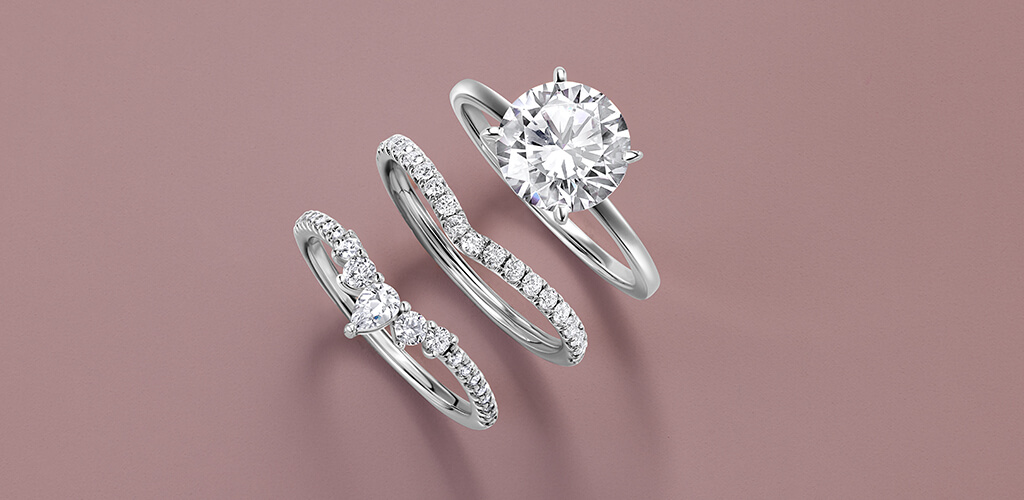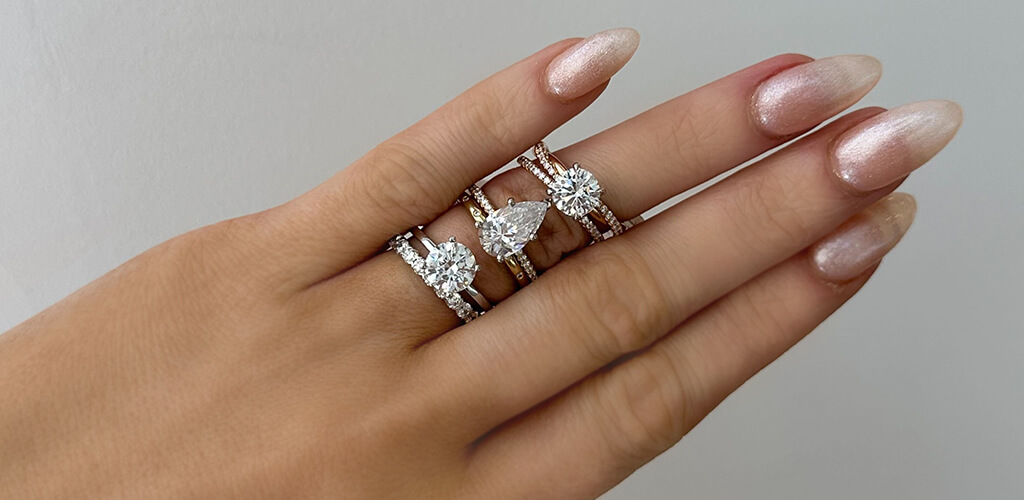There are plenty of metal types to choose from when picking your dream engagement ring. Platinum is one that stands out as a favourable option for buyers looking for quality and a metal that will last.
We’re exploring everything you need to know about platinum engagement rings and how this metal compares to other popular options.
What Is Platinum?
What is platinum? Platinum is a rare, pure metal that gets its color naturally. It is 95% platinum with 5% mixed alloys. Its name originates from the Spanish Platina, a diminutive of Plata, or silver. While it may have a similar appearance thanks to its color, platinum is very much its own metal.
What Is The Difference Between Platinum And White Gold?
White gold and platinum are great choices if you prefer the look of a white metal.
So which is better? What’s the difference? While visually similar, this is really where their similarities end.
White gold has a very different chemical makeup from platinum, making one metal better for some designs and uses and the other metal better for other designs and uses.
Each metal has both advantages and disadvantages, so let’s dive in so you can pick the right metal for your fabulous engagement ring, wedding ring, and fine jewelry.
Why Choose A Platinum Engagement Ring?
If you prefer a brighter color, without replacing any coating, then a platinum engagement ring is the choice for you. Similarly, if you have sensitive skin, or allergies are an issue, then stick to platinum for its hypoallergenic properties.
- Durability: Platinum is one of the strongest and most durable metals, resistant to scratching and tarnishing.
- Hypoallergenic: It’s less likely to cause allergic reactions, making it ideal for sensitive skin.
- Luster and Shine: Platinum has a naturally white sheen that doesn’t fade, maintaining its beauty over time.
- Density: Its heavier weight gives it a luxurious feel and signifies quality.
- Longevity: Platinum jewelry can last a lifetime, making it a meaningful choice for engagement rings.
- Low Maintenance: Requires minimal upkeep compared to other metals, as it retains its appearance with little effort.
- Value Retention: Typically, platinum retains its value well, making it a good investment.
- Versatility: Complements a variety of diamond cuts and styles, enhancing their brilliance.
Disadvantages of Buying Platinum Engagement Rings
While platinum has many appealing qualities, it also comes with a few drawbacks. For starters, it’s more expensive than other metals like gold, which can be a significant factor for budget-conscious buyers.
Additionally, platinum is heavier, which some people might find uncomfortable for everyday wear. Although it’s durable, it can scratch, and those scratches may require professional polishing to maintain its shine.
Lastly, because it’s a dense metal, resizing a platinum ring can be more challenging than resizing gold, which might be a concern if you anticipate needing adjustments in the future. So, while platinum is a stunning choice, it’s essential to weigh these factors against your personal preferences and lifestyle.
The Best Diamond Color Grade For Platinum Engagement Rings
When looking for the ideal diamond color for platinum rings, keep in mind that this metal is a white shade, and can easily enhance yellow hints in both earth and lab grown diamonds.
The best diamond color grade for platinum engagement rings typically falls between D and H. Diamonds in the D-F range are colorless and exhibit the highest quality, providing exceptional brilliance against the white backdrop of platinum. Grades G-H are near-colorless, offering a great balance of value and appearance, as they still look stunning when set in platinum.
How Much Does A Platinum Ring Cost?
The cost of a platinum engagement ring typically ranges from $1,000 to $5,000 for simpler styles and can go up to $10,000 or more for more intricate designs or larger diamonds. Factors such as the quality of the diamond, the complexity of the setting, and brand reputation can significantly influence the price.
On average, you can expect to spend around $2,000 to $8,000 for a good-quality platinum engagement ring.



